

Home Grown is a small family-owned company with a love for
gardening. From our own backyard, we have cultivated a passion
for gardening that we want to share. We believe that it should be
accessible to everyone, fun, and easy to start. Our goal at Home
Grown is to .provide you with the best quality products and services.
Our team has spent years sourcing and creating products that help
everyone, from beginner to experienced gardeners alike
No green thumb? No worries!
We made sure that no green thumb is required to help you have your
dream of gardening come true by providing you detailed instructions
and guides which are included in all of our seed packs and kits.
We hope you experience the same joy we have found for
gardening.

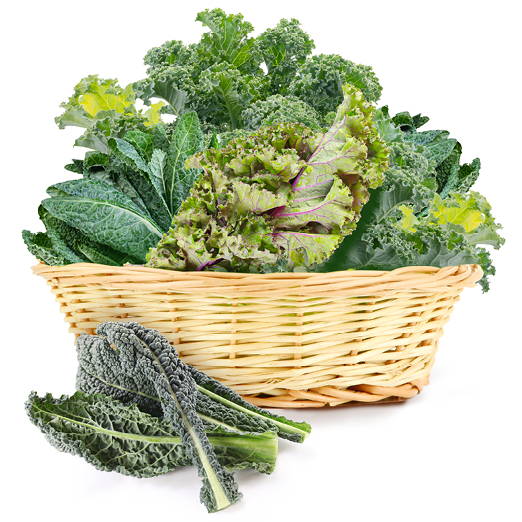
Enjoy our amazing selection of 4 kale varieties that offer a wonderful
mix of flavors and textures. After being exposed to frost, their taste
becomes sweeter!
Kale is a healthy and versatile cool-season crop that doesn’t like very
hot weather. For optimal results in areas with a short growing season,
kale is best sown in early spring or in midsummer for a fall crop. In
mild and warm areas, sow kale in midwinter and again in fall.
Transplanting Tips
Kale transplants can be planted into the garden 2 to 3 weeks before
the last average frost in your area. These frost-hardy plants can
withstand temperatures as low as 14°F, but if temperatures are likely
to drop down even more, cover your transplants during the night!
CONTENT (Click on the type of Kale below to go to its guide)
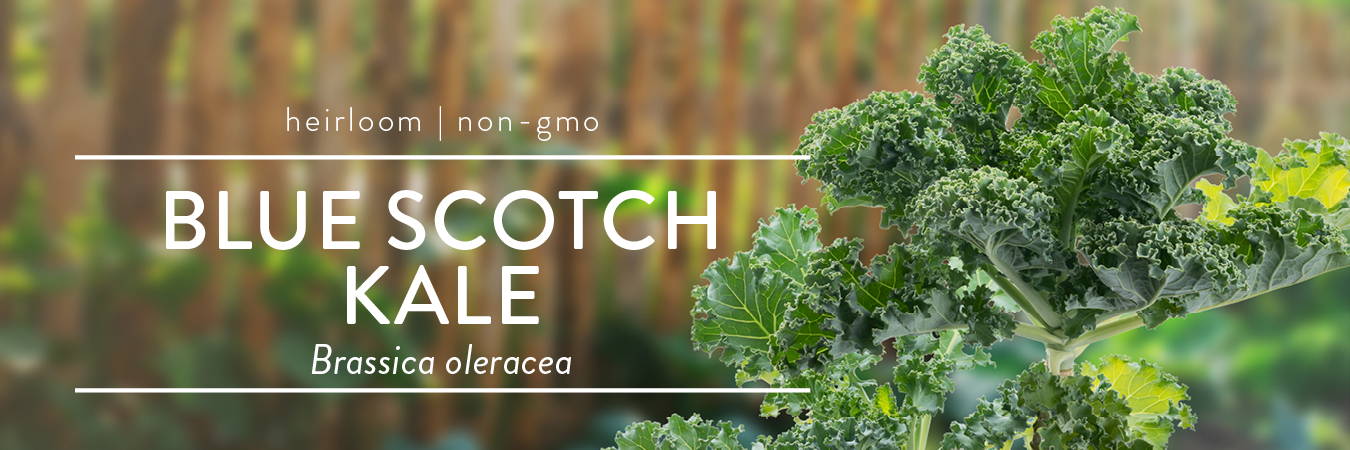
A highly alluring variety of kale, Blue Scotch
is a cultivar with distinctively wrinkled, blue-
green leaves. Nutritious and ornamental at
the same time, this variety is also regarded as
one of the hardiest. This plant prefers cooler
weather and is best planted in early spring
or late summer for a fall harvest. In zone 6
and warmer, this plant can be harvested all
winter long.
Sowing Indoors
Start to sow indoors around 6 weeks before the last frost in your area.
Prepare a seed starting tray filled with well-drained soil and
press 3 seeds in one cell 1/4 to 1/2 inch deep. Water and moisten until
germination and keep the tray in a warm place that receives bright sunlight.
Kale seeds will sprout when the soil temperatures are as low as 40°F,
though the optimal range is anywhere between 45°F and 80°F.
Transplanting
Transplant kale plants outdoors, approximately 1 to 2 weeks before
the last frost. Prepare your bed by turning the soil over and removing
stones and weeds. Seedlings are ready to transplant when they are
approximately 6 inches tall. Plant them in fertile, well-drained soil. A
bit of shade is fine. Space plants about a foot apart in rows that are
two feet apart. Water deeply and continue providing water during
dry periods to encourage uninterrupted growth.
Sowing Outdoors
Blue Scotch kale is a hardy plant that can also be directly sown in
early spring (as soon as the ground can be worked) or in midsummer
for a fall crop. For a fall crop, sow the seeds 3 to 4 months before
the first frost date. Plant your seeds in full sunlight, sowing evenly,
before covering with a 1/4 inch of soil. Firm the soil lightly and water
gently. Keeping the soil moist is important for optimal germination.
The seeds will germinate when the soil temperatures are anywhere
between 45°F and 80°F. Under the right growing conditions, your
seedlings should emerge in two weeks or less. When several inches
tall, thin to 18 to 24 inches apart.
Harvest and Use
For the sweetest flavor, harvest kale in cool weather, ideally after
a frost. When the plant is touched with the light frost, its taste
becomes sweeter. Pick individual leaves or harvest the entire plant
at one cutting. Allow the central bud of the plant to remain, as this
will generate fresh leaves. Store your kale in the refrigerator for
up to one week or freeze it for long-term storage. This variety is a
popular addition to salads, smoothies, and soups. It is also commonly
prepared as a side dish by simply wilting the leaves in a hot pan with
butter or bacon. You can also use it as a garnish for fish and chicken.
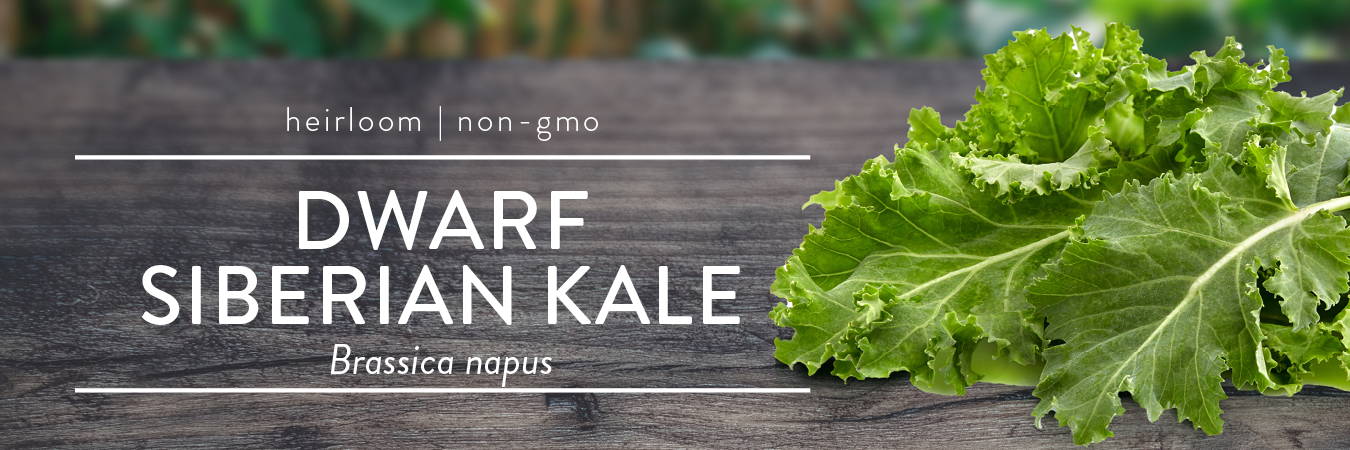
Dwarf Siberian kale is noted for its large,
heavily frilled, green or purple leaves that do
not form heads. Although having the name
“dwarf,” this variety of kale grows up to 16
inches tall. The inner leaves are sweeter than
the outside leaves and make a great addition
to salads. Dwarf Siberian is a frost-tolerant,
extremely cold-hardy kale variety that can be
harvested right through the snow. Prefers full
sun in spring and fall, but can benefit from
light shade during hot weather. It likes well-
drained, fertile soil high in organic matter,
and consistent moisture.
Sowing Indoors
Targeting to plant outside in spring, prepare to plant indoors around
6 weeks before the last frost in your area. Prepare a seed starting tray
with fertile, well-drained soil and push seeds 1/2 inch deep. Moisten
soil regularly and keep the tray in a warm and bright spot. Seeds will
germinate in about 7 days at soil temperatures of 45°F to 80°F.
Transplanting
Thin to the strongest seedlings and transplant outside 1 to 2 weeks
before the last frost. Mix some compost in the soil to promote
healthier and established plants. Space the seedlings 12 to 24 inches
apart. The planting area can receive full sunlight but can also grow
well under a shade especially during hot weather.
Sowing Outdoors
Kale seeds can be directly sown in early spring (as soon as the ground
can be worked) or in midsummer for a fall crop. For a fall crop, sow
the seeds 3 to 4 months before the first frost date. Start by weeding,
loosening the soil, and incorporating fertilizer into the soil. Plant 2 to
3 seeds in the same area and space them 12 to 18 inches apart. When
several inches tall, thin to 24 inches and remove any weak seedlings.
Water until established but take care not to overwater.
Harvest and Use
Siberian kale is amenable to a constant harvest. Harvest can start
when the leaves are at least 8 to 10 inches big. Pick the larger leaves
from the bottom of the plant first and allow the higher leaves to
grow bigger. This selective harvesting will allow you to harvest from a
single plant for many months. The tender young leaves can be eaten
raw, cooked for soup, or used in stir-fries. They can be also used as a
garnish or mixed in smoothies.
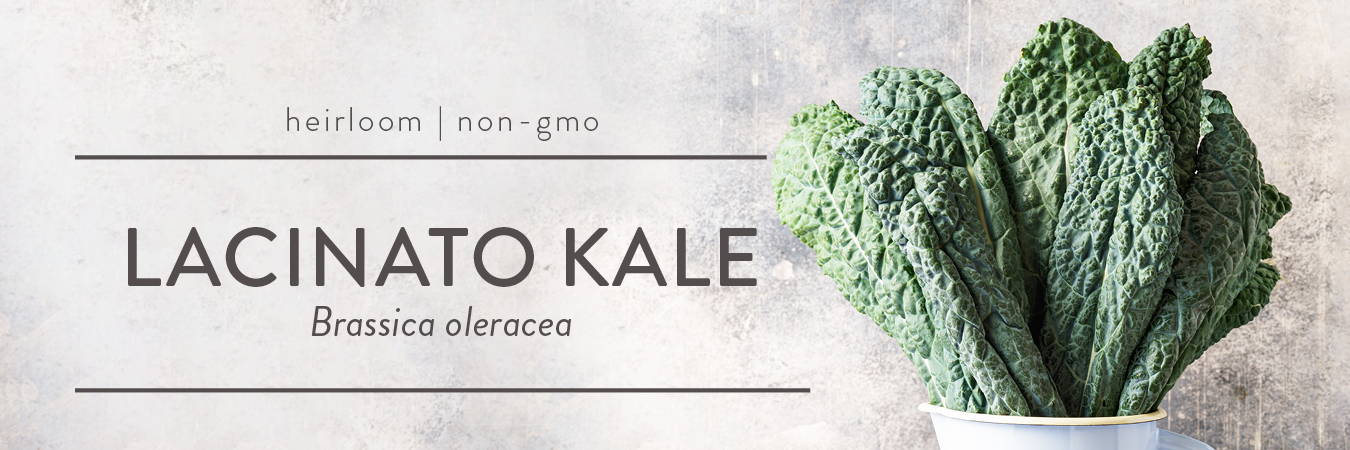
Lacinato kale originated from Italy and is also
referred to as Italian, Dinosaur, or Toscana
kale. Dinosaur may be an unusual nickname
for this plant but the bumpy, reptile-skin
texture really justifies the name. It’s an
exceptionally tall variety that grows up to
3 feet tall. As a kitchen ingredient, it can be
easily prepared as both its leaves and ribs
are edible. The large, dark green leaves retain
their crispy texture even when well-cooked.
Sowing Indoors
In areas with a short growing season, kale seeds are best started indoors approximately
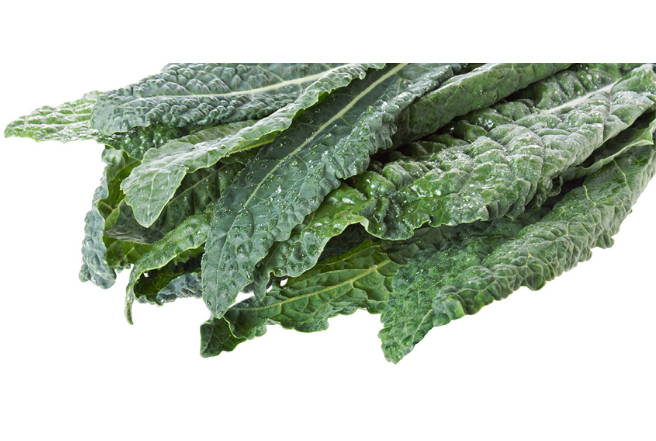
6 weeks before transplanting outside. Prepare a seed starting tray
with fertile, well-drained soil, and push in 2 to 3 seeds in each cell 1/4
inch deep. Moisten and add some compost to aid germination. Keep
the tray in a warm, bright place and try to achieve a soil temperature
of at least 45°F.
Transplanting
Once the seedlings are thinned and the strongest have grown to
6 inches tall, prepare to transplant outside. Do this a week or two
before the last frost date. Mix some compost into well-drained soil
and remove the weeds before setting the seedlings in your garden.
An area that receives full sunlight will help your kale grow more
leaves. Space the plants 24 to 36 inches apart to give them enough
room to grow.
Sowing Outdoors
Lacinato kale seeds are best sown outside during cool weather,
particularly in spring or fall. In spring, sow the seeds as soon as the
soil becomes workable. For fall or winter harvest, sow in midsummer
or fall. Remove the weeds, add some compost, and loosen the soil
before planting the seeds 1/4 inch deep. Space the seeds 4 inches
apart and when they have grown to 6 inches, thin them and retain
the strongest seedlings that will be spaced 24 to 36 inches apart.
Water only when dry until established. Increase watering during hot
spells and drought periods.
Harvest and Use
You can harvest both young and mature leaves. Pick the outer leaves
as the center helps the plant to grow more. Since both the ribs and
leaves of Lacinato kale are edible and delicious, they are very easy to
prepare and incorporate in many recipes. Young leaves can be added
to salads and sandwiches while mature leaves can be made into kale
chips or added into pasta and soups. This wonderful kale variety
is a traditional ingredient of famous Italian dishes minestrone and
ribollita.
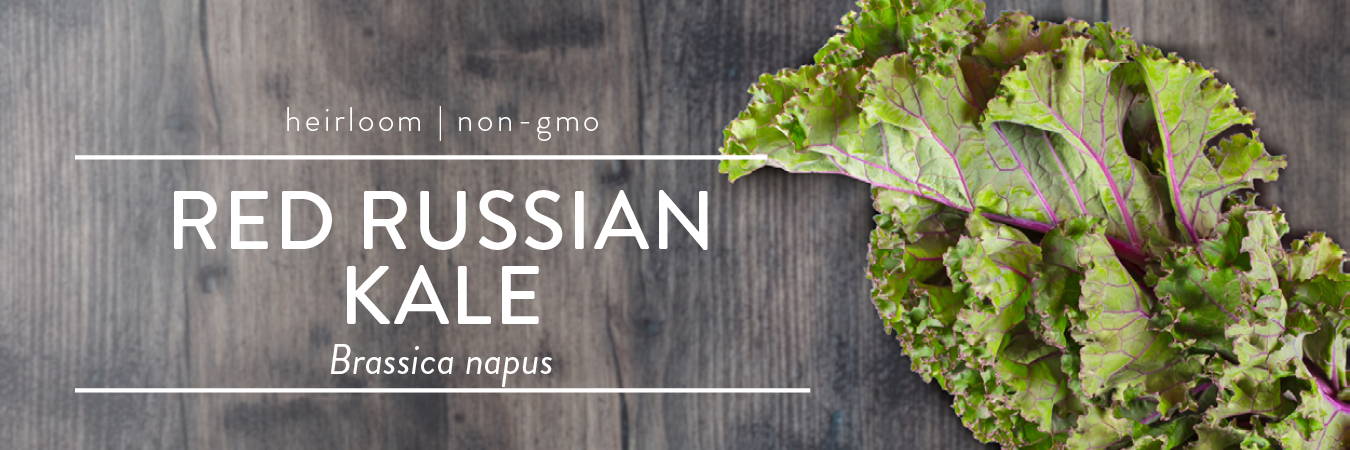
Red Russian kale is noted for its tender leaves
which are softer than in other kale varieties.
Originally from Siberia, this super-hardy crop
is remarkably ornamental and extremely
nutritious. It can be distinguished by its frilly,
blue-green leaves with purplish-red stems.
The taste is often described as sweet and
mild. Just like all kale varieties, it does best in
cool weather and it’s hardy to -10°F!
Sowing Indoors
Plant 4 to 6 weeks before the last spring frost date in your area.
Fill a seed starting tray with well-drained soil and incorporate some compost.
Plant seeds 1/4 inch deep and keep the soil evenly moist.
Keep the tray in a warm, bright place and try to achieve a soil
temperature of at least 45°F. Under the right growing conditions, Red
Russian seeds will germinate in less than 10 days.
Transplanting
When the seedlings are around 6 inches tall, get ready to transplant
them outside. The best time to transplant the seedlings is about a
week or two before the last spring frost date. Prepare the soil bed
by removing weeds, loosening the soil, and adding some compost.
Space the strongest seedlings 12 to 24 inches apart. Water until
established. Once established, ensure that 1 inch top of the soil is
moist.
Sowing Outdoors
Red Russian seeds can be directly sown in early spring (as soon as
the ground can be worked) or in midsummer for a fall crop. Select
an area in your garden that receives full sunlight and prepare the soil
bed. Plant seeds 4 inches apart and water regularly. When several
inches tall, thin the seedlings to the strongest, leaving approximately
12 to 24 inches of space between each plant. Water more frequently
during hot weather but be wary of overwatering.
Harvest and Use
Siberian kale is amenable to a constant harvest. Harvest can start
when the leaves are at least 8 to 10 inches big. Pick the larger leaves
from the bottom of the plant first and allow the higher leaves to
grow bigger. This selective harvesting will allow you to harvest from a
single plant for many months. The tender young leaves can be eaten
raw, cooked for soup, or used in stir-fries. They can be also used as a
garnish or mixed in smoothies.